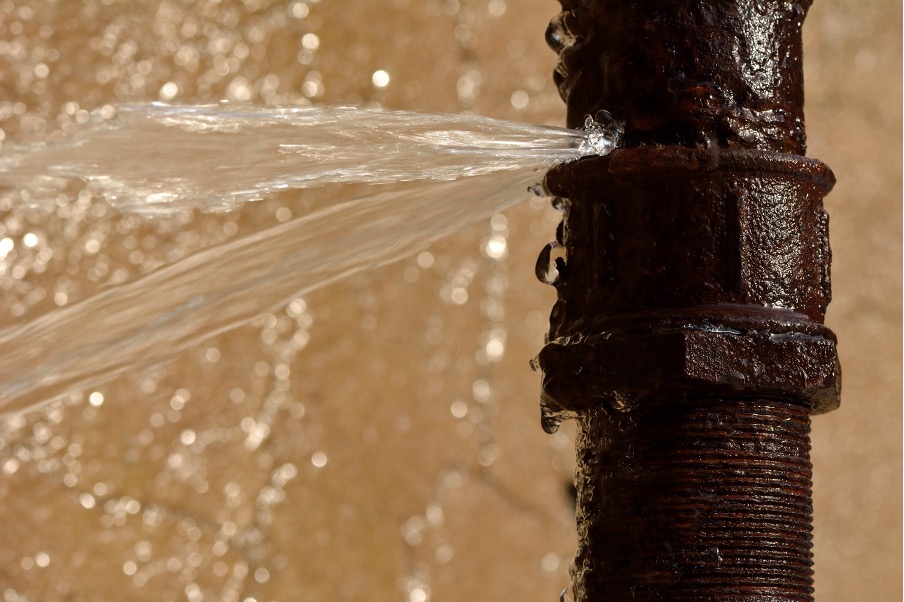We have found this post relating to Hacks to detect leaks directly below on the internet and thought it made perfect sense to write about it with you over here.

Early discovery of leaking water lines can reduce a potential catastrophe. Some small water leakages might not be visible.
1. Analyze the Water Meter
Every home has a water meter. Inspecting it is a guaranteed manner in which helps you discover leakages. For starters, switch off all the water sources. Make certain no person will certainly flush, utilize the tap, shower, run the cleaning machine or dish washer. From there, go to the meter and also watch if it will certainly alter. Given that nobody is using it, there ought to be no motions. If it relocates, that suggests a fast-moving leakage. Also, if you discover no changes, wait an hour or two and check back once more. This indicates you might have a sluggish leak that can also be underground.
2. Check Water Intake
If you detect unexpected changes, regardless of your consumption being the same, it suggests that you have leaks in your plumbing system. An abrupt spike in your costs indicates a fast-moving leakage.
A constant increase every month, also with the exact same behaviors, shows you have a slow leak that's additionally gradually intensifying. Call a plumber to completely check your residential property, especially if you really feel a cozy area on your flooring with piping below.
3. Do a Food Coloring Examination
When it comes to water consumption, 30% comes from toilets. If the shade somehow infiltrates your bowl during that time without flushing, there's a leak in between the container as well as bowl.
4. Asses Outside Lines
Do not neglect to check your outside water lines as well. Must water seep out of the connection, you have a loosened rubber gasket. One little leak can waste heaps of water and spike your water bill.
5. Examine the circumstance as well as inspect
House owners should make it a behavior to inspect under the sink counters and also inside cabinets for any kind of bad odor or mold growth. These two red flags indicate a leak so prompt interest is called for. Doing routine inspections, even bi-annually, can conserve you from a major trouble.
More notably, if you recognize your home is currently old, maintain a watchful eye on your heating systems, tubes, pipelines and so on. Check for discolorations and deteriorating as a lot of home appliances and pipes have a life span. They will also normally deteriorate due to tear as well as use. Don't wait for it to intensify if you suspect dripping water lines in your plumbing system. Call a specialist plumber immediately so you don't wind up with a dreadful mess in your house.
Early discovery of dripping water lines can alleviate a potential calamity. Some little water leakages might not be visible. Inspecting it is a proven way that aids you discover leaks. One small leakage can squander lots of water and also increase your water bill.
If you suspect leaking water lines in your plumbing system, don't wait for it to rise.
WARNING SIGNS OF WATER LEAKAGE BEHIND THE WALL
PERSISTENT MUSTY ODORS
As water slowly drips from a leaky pipe inside the wall, flooring and sheetrock stay damp and develop an odor similar to wet cardboard. It generates a musty smell that can help you find hidden leaks.
MOLD IN UNUSUAL AREAS
Mold usually grows in wet areas like kitchens, baths and laundry rooms. If you spot the stuff on walls or baseboards in other rooms of the house, it’s a good indicator of undetected water leaks.
STAINS THAT GROW
When mold thrives around a leaky pipe, it sometimes takes hold on the inside surface of the affected wall. A growing stain on otherwise clean sheetrock is often your sign of a hidden plumbing problem.
PEELING OR BUBBLING WALLPAPER / PAINT
This clue is easy to miss in rooms that don’t get much use. When you see wallpaper separating along seams or paint bubbling or flaking off the wall, blame sheetrock that stays wet because of an undetected leak.
BUCKLED CEILINGS AND STAINED FLOORS
If ceilings or floors in bathrooms, kitchens or laundry areas develop structural problems, don’t rule out constant damp inside the walls. Wet sheetrock can affect adjacent framing, flooring and ceilings.
https://www.servicemasterbyzaba.com/blog/how-to-detect-water-leakage-in-walls/

As a passionate person who reads about Locating water leaks, I thought sharing that segment was really helpful. Appreciated our article? Please share it. Help someone else discover it. Many thanks for your time. Visit us again soon.